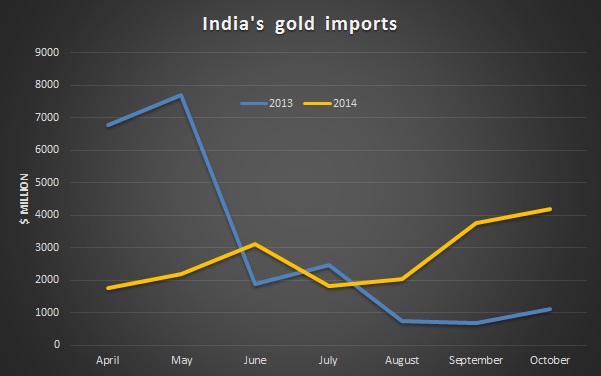
GJEPC urges government to avoid a hike in gold import duty
India’s gold imports have increased almost 400% in October y-o-y, while exports of Gems and Jewellery declined 2.2% Vanita Peter D’souza | @TheDollarBiz
 *Provisional figures (Source - Ministry of Commerce, India)
*Provisional figures (Source - Ministry of Commerce, India)Instead, there is a need to review the relaxation in gold imports announced by the previous UPA government on May 21, 2014, Parekh says. The notification allowed Star Trading Houses and Premium Trading Houses to import gold under the 80:20 scheme, but experts say that some importers have not released the gold into the market in anticipation of higher prices due to a possible increase in import duty. “That notification should either be modified or withdrawn,” Parekh told gjpec.org. He explains, “There were no clear norms governing the distribution of gold by these agencies, so inevitably hardly any amount of the metal they imported reached the small and medium players in both the domestic and export sectors as it was sold to bigger manufacturers who were able to pay higher premiums.” This has hurt India’s exports of Gems and Jewellery exports. In October 2014, India’s exports of Gems and Jewellery entered the negative list, reaching around $3.9 billion, which is down around 2.25% from around $4 billion recorded in October 2013. Restricting gold imports remains a challenge in India as most Indians buy gold in the form of jewellery as a part of traditions, particularly during festivals and weddings, and also as an investment. According to the World Gold Council (WGC), the rupee gold price in India has increased around 400% over the last decade, but gold demand (75% in jewellery form) in India continues to grow with over two-thirds of the demand coming from the rural parts of India. WGC says that gold demand is expected to grow in India in the next 10 years. “Over the next decade, there are likely to be 15 million weddings per year in India, where more than half of the population is under 25,” it says.
This article was published on November 20, 2014.






 to success.
to success.